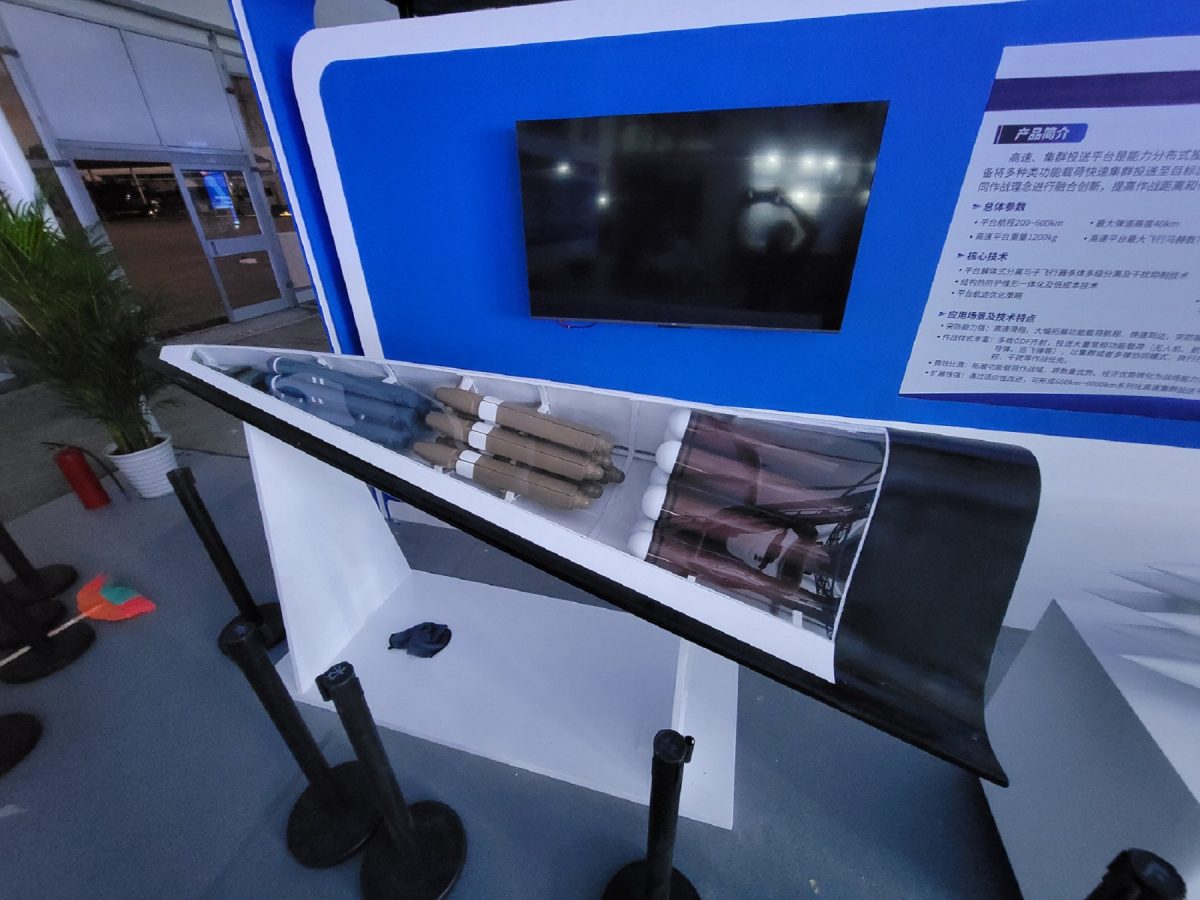On the eve of the official opening of the Zhuhai Air Show 2024, China’s defense industry is already capturing a lot of attention on social media with multiple new developments, including the unveiling of an innovative hypersonic glide vehicle concept , designed to launch guided submunitions and project its own weaponry.
The GDF-600, designed by the Guangdong Aerodynamics Research Academy (GARA), represents a significant challenge to air defense systems. They already find it extremely difficult to intercept munitions traveling at high supersonic or hypersonic speeds, and the task becomes even more complex when faced with a vehicle capable of deploying its own guided submunitions.
7倍音速的GDF-600高速平台了解一下 pic.twitter.com/Xz3FYwPsZg
— DS北风(风哥) (@WenJian0922) November 11, 2024
As promoted by GARA, “the GDF-600 high-speed platform has the capability to rapidly transport a variety of functional payloads to the target area. This equipment innovatively merges high-speed technology with the concept of swarm collaborative combat, increasing the range of conventional weapons and their ability to surprise the enemy, thus forming a new combat capability for conventional weaponry.»
General parameters of the GDF-600:
- Range of the platform: 200-600 km.
- Maximum ballistic trajectory height: 40 km
- Take-off weight: 5000 kg
- Weight of high-speed platform: 1200 kg
- Maximum flight speed of the high-speed platform: Mach 7
The GDF-600 high-speed platform incorporates a set of advanced technologies and an innovative design. Key technologies include a multi-body, multi-stage platform and subvehicle separation system, including jamming suppression mechanisms. This capability enables the precise and controlled release of submunitions, even in high threat density environments. In addition, the GDF-600‘s structure incorporates low-cost thermal protection, which not only protects the system in flight, but also facilitates its production and maintenance.
Another innovative aspect is the simplification and optimization of its flight control system, which ensures greater operational efficiency and agile response to changing situations on the battlefield. The modular design of its components allows rapid adaptation to different missions and the integration of various functional loads. This modularity also favors the use of sub-vehicles of different classes and facilitates the creation of swarm configurations, increasing flexibility in attack and reconnaissance missions.
See also: China unveils its second fifth-generation fighter, the J-35A, to the public at Zhuhai Airshow
The GDF-600 is distinguished by its high penetration capability and operational versatility. Thanks to its speed and high-altitude glide capability, it can significantly extend the range of conventional weapons, reaching targets quickly and with remarkable evasiveness against air defense systems. In addition, its platform allows for the simultaneous deployment of multiple types of effectors, such as drones, bombs, subsonic and supersonic missiles, as well as loitering munitions. This gives it great adaptability to perform missions ranging from direct attack to reconnaissance, communication and electronic jamming.
In the mock-up on display at the GARA stand, the GDF-600 is equipped with a mixed load that includes 6 «patrol missiles » (loitering munitions?), 6 reconnaissance drones, and 13 subsonic attack missiles, demonstrating its capability to conduct a wide spectrum of operations in a variety of tactical scenarios.
GDF-600 2/n pic.twitter.com/AEiaPy3uaI
— Michael Jerdev (@MuxelAero) November 10, 2024
GARA claims that the GDF-600 hypersonic vehicle also excels in its high cost-effectiveness, acting as a force multiplier on the battlefield. Thanks to the high adaptability of its base design, this platform can give birth to a family of high-speed strike systems with varying ranges, ranging from 600 km to 6000 km. This flexibility significantly expands its capabilities for long-range operations and massive swarm attacks, adapting to various scenarios and tactical needs.
This innovative concept confirms China’s leadership in the development of hypersonic weapons, a field in which Western technology is still lagging behind. However, it also poses significant technical challenges, such as ensuring that submunitions separate safely without damage from the intense heat and friction generated by hypersonic velocities.














